Tue 22 Sep 2009
A Review by Mike Tooney: ELLERY QUEEN, Editor – Masterpieces of Mystery: The Supersleuths.
Posted by Steve under Characters , Reviews[27] Comments
ELLERY QUEEN, Editor – Masterpieces of Mystery: The Supersleuths. Davis Publications, hardcover, 1976.
Back in the early 1970s, the country of Nicaragua asked Ellery Queen’s Mystery Magazine (EQMM) “to set up a poll to establish the dozen greatest detectives of all time” in anticipation of that nation’s issuing a commemorative set of twelve postage stamps to celebrate the 50th anniversary of Interpol. This book is a result — or, perhaps, a by-product of that request.
EQMM conducted three polls of mystery critics and editors, professional mystery writers, and mystery readers. It was from the last group that an unexpected (to Ellery Queen) result came:
“Only one fictional detective was voted for unanimously by mystery critics, mystery editors, and mystery writers — not surprisingly, Sherlock Holmes. But, surprisingly, the vote for Sherlock Holmes by mystery readers was not unanimous: no less than 64 readers out of 1,090 failed to rank Holmes as one of the 12 best and greatest. Surprising, indeed. (Surprising? Incredible!)”
Here are the poll results, in order of popularity:
1-Sherlock Holmes 2-Hercule Poirot 3-Ellery Queen 4-Nero Wolfe 5-Perry Mason 6-Charlie Chan 7-Inspector Maigret 8-C. Auguste Dupin 9-Sam Spade 10-Father Brown 11-Lord Peter Wimsey 12-Philip Marlowe 13-Dr. Gideon Fell 14-Lew Archer 15-Albert Campion 16-George Gideon 17-Miss Jane Marple 18-Philo Vance 19-The Saint (Simon Templar) 20-Roderick Alleyn 21-Luis Mendoza 22-Sir Henry Merrivale 23-Mike Hammer 24-James Bond 25-Sergeant Cuff 26-Inspector Roger West

“This anthology … contains stories by 14 of the 15 top vote-getters in the three combined polls — 14 of the 15 most famous and most popular detective heroes of fiction.”
Ellery Queen includes a note: “Why Charlie Chan Does Not Appear in the Volume.” Can you guess why?
Each story in this volume is introduced by a short biographical paragraph and a cameo photograph of the author(s).
CONTENTS:

1. “The Adventure of the Abbey Grange” (1904) by A. Conan Doyle (1859-1930). Supersleuth: Sherlock Holmes.
… our thoughts were entirely absorbed by the terrible object which lay upon the tiger-skin hearthrug in front of the fire. It was the body of a tall, well-made man, about forty years of age. He lay upon his back, his face upturned, with his white teeth grinning through his short, black beard.
Comment: When a rich but sadistic man is apparently murdered by a gang of burglars, Holmes and Watson are summoned; but the case quickly grows more complex. The solution lies in the presence of three wine glasses and a frayed bell-rope. Holmes remarks to Watson at one point: “Once or twice in my career I feel that I have done more real harm by my discovery of the criminal than ever he had done by his crime. I have learned caution now, and I had rather play tricks with the law of England than with my own conscience.” Filmed for TV in 1986 with Jeremy Brett.
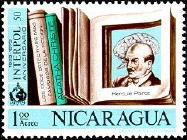
2. “The Dream” (1937) by Agatha Christie (1890-1976). Supersleuth: Hercule Poirot.
“My laundress,” said Poirot, “was very important. That miserable woman who ruins my collars was, for the first time in her life, useful to somebody.”
Comment: When a man who dreams that he commits suicide is found dead in a watched room, only Poirot suspects murder. “Motive and opportunity are not enough …. There must also be the criminal temperament.” Filmed for TV in 1989 with David Suchet.
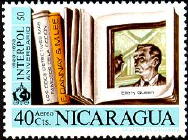
3. “The Case Against Carroll” (1958) by Ellery Queen (1905-1971; 1905-1982). Supersleuth: Ellery Queen.
“The Fancy Dan who weaves an elaborate shroud for somebody else more often than not winds up occupying it himself. The clever boys trip over their own cleverness. There’s a complex pattern here, and it’s getting more tangled by the hour.”
Comment: The case against Carroll — accused of murdering a law firm partner — seems airtight; the noose tightens when someone who can support his alibi is also murdered. This story is a clever variation on alibi-breaking and is perhaps the penultimate example of that theme. Notice how the narrative’s focus shifts from Carroll at the start to Ellery at the end.
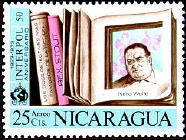
4. “The Zero Clue” (1953) by Rex Stout (1886-1975). Supersleuth: Nero Wolfe (with an able — but unwelcome — assist from Archie Goodwin).
That was a funny thing. I’m strong on hunches, and I’ve had some beauts during the years I’ve been with Wolfe; but that day there wasn’t the slightest glimmer of something impending.
Comment: A mathematical genius is murdered and Archie unwittingly visits the crime scene, causing Inspector Cramer and a horde of policemen to invade Wolfe’s inner sanctum ( “The biggest assortment of homicide employees I had ever gazed on extended from wall to wall in the rear ….”) The dying clue involves eight pencils and a broken eraser, and the solution is found in Hindu mathematics — go figure!
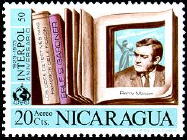
5. “The Case of the Crimson Kiss” (1948) by Erle Stanley Gardner (1889-1970). Supersleuth: Perry Mason (with Della Street and Paul Drake).
“Ordinarily I’d spar for time, but in this case I’m afraid time is our enemy, Della. We’re going to have to walk into court with all the assurance in the world and pull a very large rabbit out of a very small hat.”
Comment: “… Carver L. Clements, wealthy playboy, yachtsman, broker, gambler for high stakes, was dead.” And good riddance, too. But why is Fay Allison, who never even met the deceased, on trial for his murder — especially when there are better suspects around like, say, Perry Mason and Della Street? Talk about your kiss of death! Filmed for TV in 1957 with Raymond Burr.
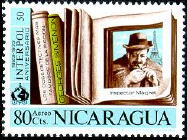
6. “Inspector Maigret Pursues” (1961) by Georges Simenon (1903-1989). Supersleuth: Inspector Maigret.
Had the police one single clue? Nothing. Not one piece of evidence. A man killed during the night in the Bois de Boulogne. No weapon is found. No prints.
Comment: Slogging police work for Maigret and his detectives through the freezing streets and stuffy bars of wintertime Paris. “He didn’t know yet that this dreadful trail was to become a classic, and that for years the older generation of detectives would recount the details to new colleagues.” Yet Maigret came to view it differently: “As things turned out, this case was to be referred to at Headquarters as the one perhaps most characteristically Maigret; but when they spoke of it in his hearing, he had a curious way of turning his head away with a groan.”
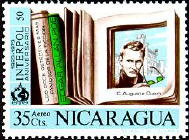
7. “The Purloined Letter” (1844) by Edgar Allan Poe (1809-1849). Supersleuth: C. Auguste Dupin.
“… I have received personal information, from a very high quarter, that a certain document of the last importance has been purloined from the royal apartments. The individual who purloined it is known — this beyond a doubt; he was seen to take it. It is known, also, that it still remains in his possession.”
Comment: The world’s first armchair detective chain smokes his way to a logical solution to a non-violent crime.
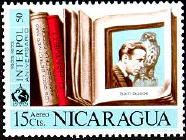
8. “Too Many Have Lived” (1932) by Dashiell Hammett (1894-1961). Supersleuth: Sam Spade.
“Who is this Eli Haven?” “He’s a bad egg. He doesn’t do anything. Writes poetry or something.”
Comment: The world’s first popular gumshoe chain-smokes his way to a logical solution to a very violent crime.
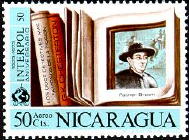
9. “The Man in the Passage” (1913) by Gilbert K. Chesterton (1874-1936). Supersleuth: Father Brown.
The three men looked down, and in one of them at least the life died in that late light of afternoon. It ran along the passage like a path of gold, and in the midst of it Aurora Rome lay lustrous in her robes of green and gold, with her dead face turned upwards.
Comment: Actress Aurora Rome is murdered in her theatre dressing room amidst a group of admirers — and one nondescript Catholic priest. Considering that everyone but the clergyman had experienced amorous impulses exceeding adoration towards her, why would anybody want to kill her? In a courtroom finale, Father Brown clarifies it all, you could say, by holding up a mirror to human nature. (Defense counsel is named Patrick Butler — just a coincidence?)

10. “The Footsteps That Ran” (1928) by Dorothy L. Sayers (1893-1957). Supersleuth: Lord Peter Wimsey (with Bunter).
“No use playing your bally-fool-with-an-eyeglass tricks on me, Wimsey. I’m up to them.”
Comment: Lord Peter Wimsey-cally solves it when a woman is murdered right over his head, one floor up. The assailant has apparently taken flight with the weapon, but the killer’s goose is cooked when Wimsey gets the bird.
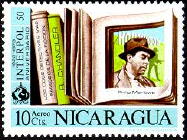
11. “The Pencil” (1959; published posthumously) by Raymond Chandler (1888-1959). Supersleuth: Philip Marlowe.
I had my pipe lit and going well. I frowned down at the one-grand note. I could use it very nicely. My checking account could kiss the sidewalk without stooping.
Comment: Marlowe is hired by “an ex-hood, used to be a troubleshooter for the Outfit, the Syndicate, the big mob, or whatever name you want to use for it.” As he wisecracks his way through the case, he receives — by Special Delivery, no less — the … pencil!
12. “The Proverbial Murder” (1943) by John Dickson Carr (1906-1977). Supersleuth: Dr. Gideon Fell .
“You see,” [Dr. Fell] said, “this crime is very much more ingenious than it looks. A certain person who is listening to me now has created something of an artistic masterpiece.”
Comment: A simple case for Gideon Fell — simple, that is, if, like him, you can correctly connect up the disturbed window curtain, the disappearing stuffed wildcat, dried moss that’s gone missing, and a gun that couldn’t possibly have fired the fatal bullet but did. Archons of Athens!
13. “Midnight Blue” (1960) by Ross Macdonald (1915-1983). Supersleuth: Lew Archer.
Her hair was in curlers. She looked like a blonde Gorgon. I smiled up at her, the way the Greek whose name I don’t remember must have smiled.
Comment: Archer goes target shooting and stumbles across the body of a high school senior, her neck in a noose. Did the crack-brained hobo do it, or the highway patrol dispatcher; or was it the grieving father, or maybe the restaurant cook (a proven killer), or the philandering teacher or his estranged wife? The motive is just about the oldest one in the book, as Sam Hawthorne has been known to say.
14. “One Morning They’ll Hang Him” (1950) by Margery Allingham (1904-1966). Supersleuth: Albert Campion.
“It’s not a great matter — just one of those stupid little snags which has some perfectly obvious explanation. Once it’s settled the whole case is open-and-shut … It’s just one of those ordinary, rather depressing little stories which most murder cases are. There’s practically no mystery, no chase — nothing but a wretched liittle tragedy.”
Comment: On the contrary, Inspector Kenny, the “perfectly obvious explanation” you hope for is an illusion, as Mr. Campion goes on to prove. A shell-shocked war veteran is the prime suspect in the murder of his hot-tempered aunt, but the weapon is missing (it is, in fact, anything but sedentary). Once the killer and the gun are reunited, only then can you say “the whole case is open-and-shut.
September 22nd, 2009 at 8:41 pm
I had forgotten Luis Mendoza made the list? Hard to believe.
You have to wonder today if Lew Archer would still be there (I’d vote for him, but Macdonald’s place among the hold trinity of hard boiled writers has been usurped by Mickey Spillane and Mike Hammer over the last decade.
September 22nd, 2009 at 9:48 pm
I may have the set of stamps somewhere, but if I do, I certainly don’t know where.
Besides Mendoza, another name on this list that wouldn’t be there if the poll were done today is Sgt. Cuff, who I think now is about as obscure as they come.
Obviously there’d be some new names today — and I’d hate to start speculating there, but if anyone else would like to, please feel free — but I’m sure that Lew Archer would stay. Well, almost sure, but we’d lose Mr. Campion, I’d think, before Archer.
September 22nd, 2009 at 11:15 pm
Funnily when I started trying to think of the tecs who might be on today’s list most I came up with are writers I don’t read — Cornwell’s Kay Scarpetta, Patterson’s Alex Cross, maybe Kellerman’s Alex Delaware.
I hate to admit it but other than things from the past my contemporary reading is really scatterbrained and eclectic, where fifteen years ago I don’t think there was a major genre writer whose work I didn’t read a little.
September 22nd, 2009 at 11:21 pm
I’ve heard some discussion about Spillane’s Mike Hammer now being considered one of the better series, etc. I’ve read most of them but no way do I consider Spillane anywhere near the level of Ross Macdonald. I recently reread all 18 of the Lew Archer novels and was impressed as to how well they held up to a second or third reading. At no time during my rereading of this series did I feel they were overrated or dated.
September 23rd, 2009 at 12:22 am
I’m with you, Walker, in terms of who’s the better author, and I don’t think anyone’s going to argue against the both of us. There’s no way that Mickey Spillane is in the same league as Ross Macdonald.
In the early 70s, Macdonald and Lew Archer hadn’t yet reached their height of fame or critical regard, but even so, they beat out Spillane and Hammer, and fairly decisively.
But polls like this one are little more than popularity contests among mystery fans. If another poll were be conducted today, who’d come out ahead, Lew Archer or Mike Hammer? I’d bet on Archer, in spite of what David says, but in all honesty, I really don’t know. I’d be kind of nervous about my money.
I’m sure that Robert B. Parker’s Spenser would be in the overall list, and maybe the other ones that David named. If TV detectives were allowed as well as print ones, then who?
And as a PS to David, if it makes any difference, I don’t read books by Cornwell, Patterson or Kellerman either. I suppose it’s a minor rebellion against detectives with bestseller status — no other reason in particular.
September 23rd, 2009 at 3:34 am
I’m not talking about literary quality, but when most of us were growing up the holy trinity of hard boiled writers was Hammett, Chandler, and James M. Cain.
Somewhere in the seventies Ross Macdonald replaced Cain, and held the spot until the nineties, then Max Allan Collins and others began to champion Spillane, and now the three names you hear are Hammett, Chandler, and Spillane.
Good as he is Parker was never near the list, nor for that matter JDM and Travis McGee.
But unless there is a revival I don’t see Lew Archer remaining a major name to anyone but fans and afficianados. That is not a knock, just an uncomfortable fact.
Much as I love Macdonald and the Archer books the fact that Archer is such a cypher, only a voice, hurts Macdonald’s chances for long term survival. That, and most of the writers who championed Macdonald and Archer are either older or gone. His cheering section has thinned considerably.
I don’t think Spillane’s place is secure either. With Mick gone, a lot of the appeal is gone too, and there is bound to be someone moving up on him. I don’t think it will be Parker or Vachss, and Ellroy has moved too far away from the genre propper. Crumley was never prolific enough, and I think both Sue Grafton and Sara Paretsky missed their chance.
Still, interesting to see who fills the third spot next: Hammett, Chandler, and ? Or is Spillane going to outlast Cain and Macdonald? Right now I can’t think of any real contender unless it is George Pellicanos.
September 23rd, 2009 at 9:31 am
David
You’ve shifted the argument, I think, from who the greatest fictional detectives are to which three authors are on top in terms of the holy trinity of of hard-boiled writers.
Regarding the latter, I don’t the current consensus is as strong as you say it is regarding Spillane over Macdonald, no matter who’s championing the former. But I could be wrong!
It’s still another argument, though. The question is who’d come in higher now as a “great detective,” Archer or Hammer. In 1972 it was the former, and I think he’d still rank higher, but wishful thinking maybe isn’t enough to make it so.
I still think Spenser would go on a current list of great (popular) detectives, and perhaps Kinsey Millhone and/or VI Warshawski, and for some reason I think Millhone has the edge there.
Besides what detectives would be added to the top finishers in a current poll, I’m also still interested in which Golden Age favorites would get left out.
Sgt. Cuff, definitely. Do current mystery fans still read John Dickson Carr (Gideon Fell), G. K. Chesterton (Father Brown), or even Edgar Allan Poe? (If you were to ask members of DorothyL who C. Auguste Dupin was, would they know?)
September 23rd, 2009 at 3:11 pm
Steve, I wonder how many Mystery*File blog readers can answer the question posed in the review:
‘Ellery Queen includes a note: “Why Charlie Chan Does Not Appear in the Volume.” Can you guess why?’
So far, no one has offered an answer. Anybody?
—Mike
September 23rd, 2009 at 4:19 pm
Well, I know, but I didn’t think I was allowed to say.
— Steve
September 23rd, 2009 at 5:17 pm
Charlie Chan isn’t in the book because Earl Derr Biggers never wrote a shorter-than-novel story about him.
I thought everybody knew that.
September 23rd, 2009 at 5:43 pm
I have read the argument that the top three hard boiled writers are Chandler, Hammett, and Spillane. And I don’t believe it’s true at all. Spillane has a driving toughness and hard edge to his novels but the women characters are often unbelievable and the action/plots not too believable either.
I really think the top three remains Chandler, Hammett and Ross Macdonald. They certainly are better writers than Spillane.
September 23rd, 2009 at 5:51 pm
At least one anthology included a Chan story (novella) from the Charlie Chan digest, just because they were desperate to include him, but of course as Mike Doran points out Biggers never wrote a short story with Charlie.
Re the Macdonald thing, I think we are letting our love of the Archer books blind us a little. One good indicator is who reviewers refer to when they are blurbing writers, and you used to see Macdonald’s name, now you see Spillane — even when it isn’t really appropriate. There could be a revival, God knows one is deserved, and in the long run I suspect serious readers will choose Macdonald over Spillane, but wanting something doesn’t make it so, and currently Macdonald has slipped to fourth place pushing James M. Cain to a distant fifth or worse.
Even if Macdonald has managed to hold on to that third place it isn’t as secure a place as it once was, and Spillane’s champions have made inroads.
As for other tecs, I think if you include writers and critics as this did you might still get Sgt. Cuff in. You are likely right about Campion. Thomas Lynley and John Rebus might well make the list today. Spenser? I’m not sure, sales are still good, but he and Parker have both slipped in recent years in popularity. I think Kinsey Millhone might have a better shot. Maybe even Elizabeth Peters Peabody.
For that matter, would Perry Mason still make the list? I think it depends on which groups you are asking. The more it is a popularity contest the more likely some historically important characters would be left off.
I recall how shocked I was at the tecs chosen for the 100 Best Detectives. Lemme Caution? The Clewseys?
But no one is arguing that Spillane is better or somehow more deseriving that Macdonald. He isn’t, but for the time being I think the truth is that he has taken a lead over Macdonald in general to the extent you can measure that sort of thing.
Are any of the Macdonald inspired writers still publishing other than Parker and Grafton? At one time there was a small army of Archer style tecs, but I don’t really see that today.
And keep in mind, as this article points out, Sherlock Holmes didn’t do as well as everyone expected. The public is a curious beast.
September 23rd, 2009 at 6:12 pm
I noticed that about Sherlock Holmes also, but given a poll today, I’m sure he’d still come in as number one.
Ask anyone in the general public who they’d think of first if asked to name a fictional detective, and it would be Holmes. But ask anyone if they’ve read any of the Holmes stories, and I’d bet you’d get a different answer.
As for any of the other Golden Age detectives, Ellery Queen would probably disappear from anywhere near the top. You’re probably right about Perry Mason, too, David, and if it weren’t for how long the TV series was on the air, he’d probably have disappeared from the collective consciousness altogether.
I wish I could say which current day detectives would get in with any degree of confidence, but I can’t.
September 23rd, 2009 at 6:34 pm
Speaking of Sherlock Holmes, there is a great recent dvd box set titled THE RIVALS OF SHERLOCK HOLMES. 13 episodes from a TV series in 1971 starring such Victorian detectives as Dr Thorndyke, Max Carrados, Carnacki, Martin Hewitt, Romney Pringle, etc. I believe these stories were adapted from the book collection of the same name.
I’ll take these characters over today’s private eyes!
September 23rd, 2009 at 7:44 pm
Walker
Great news about The Rivals of Sherlock Holmes. Hope they do the second season too. Some great stuff here. John Neville and Barry Ingham as Dr. Thorndyke, Donald Pleasance as Carnaki, Derek Jacobi as Duckworth Drew, Douglas Wilmer as Professor Van Deusen …
The book and it’s two sequels were from Sir Hugh Greene (Graham’s brother), who also did a nice omnibus edition of Victorian Thrillers.
September 24th, 2009 at 10:18 am
Luis Mendoza was very popular from the late ’60’s through the early ’80’s then, poof, almost no one read Dell Shannon anymore. Too bad. There were were some pretty decent Mendoza short stories but, for some reason, they almost never appeared in anthologies.
Rex Stout’s “The Zero Clue” is one of my favorite Nero Wolfe novellas. As Michael Grost says on his website–the story was ahead of its time, near science fiction–. It almost seems like Stout teamed up with Issac Asimov to write this story. Strong plot, humor, detection, suspense, diagrams and an Ellery Queen-like dying message: what more can a mystery reader ask of a story! Also, I consider it a fairly-clued story because a perceptive reader might be able to solve the mystery without knowing Hindu (or Hindi) mathematics.
September 24th, 2009 at 11:35 am
Bob,
Thanks for the shout-out!
I really love “The Zero Clue” too.
When EQ called this book “Masterieces of Mystery”, he wasn’t kidding. It is just loaded with first rate stories. “The Dream” might be the best Hercules Poirot story.
And “The Case of the Crimson Kiss” gets Perry Mason involved with scientific detection.
I’ve never read a word of Dell Shannon.
Are there books of hers that are especially good?
September 24th, 2009 at 2:06 pm
Since Rex Stout made his first million as a young man creating a method of accounting for a state school system I don’t think he needed Asimov’s help on the math, but it is a great story.
Perhaps the most amazing thing about Stout was that he was a successful pulp writer turned forty when he created Wolfe. He had been knocking around the pulps since the early days and even written a novel (How Like a God) compared to Fitzgerald and Wylie’s Finly Wren.
On top of all that, as part of the work he and Alexander Woolcot did for the war effort during WW II he co-created a comic book character, Radar, who ran in Fawcett comics.
He really was a gifted man. By comparison Wolfe is a piker.
September 25th, 2009 at 6:57 pm
Have a bunch Mendoza novels by Shannon but have not read any, yet. If you can find her book of short stories (forgot the title) it is a worthwhile read. About half the stories feature Mendoza and they are good. The non-Mendoza stories–not so good.
I did not know that Stout co-created a comic book character. Have to look into that. The Wolfe novella “The Squirt and the Monkey” is concerned with a man who draws/writes a daily action comic strip. The strip sounded interesting but the story itself is one of Stout’s worst.
September 26th, 2009 at 4:12 pm
Before hazarding a guess at how the results of a modern poll would differ from the EQMM originals, don’t we need to know the methodology used back in the 1970s? I can see it would be possible for EQ to target the professionals (critics, editors, writers)– they’re a clearly defined group. But how were the readers’ nominations solicited? From a sample of EQMM subscribers? From responses to a questionnaire in the magazine? Was the poll restricted geographically or linguistically? (It’s noticeable that Simenon is the only author on the list whose work originates from outside the English language.)
September 26th, 2009 at 4:41 pm
Tom
Having taught statistics courses at all levels for most of my life, I’ve been wondering the same thing, too.
I have a feeling that you’re right: that the mystery fans included in the poll were somehow selected (or self-selected) from readers of EQMM.
There were, from Mike’s account, 1090 of them, which is an entirely acceptable number, but were they representative of all mystery readers? It’s hard to say without more information.
And — if the poll were flawed, would a current poll have to be conducted with the same flaws in order for the results to be comparable?
You put your finger on the crux of the matter right there.
— Steve
September 26th, 2009 at 7:51 pm
Steve — Here’s what Ellery Queen says in the introduction:
“As you may know, on November 13, 1972 the Central
American country of Nicaragua issued a commemorative
set of 12 postage stamps to celebrate the 50th Anniversary
of Interpol, the International Criminal Police Organization.
Also, as you may know, Nicaragua decided to use portraits
of the 12 most famous sleuths of fiction, and asked ELLERY
QUEEN’S MYSTERY MAGAZINE to set up a poll to establish
the greatest dozen detectives of all time.
“Actually, three different polls were conducted, and as a result
EQMM received 66 ballots from mystery critics and editors (the
foremost in the world), 91 ballots from professional mystery
writers (the best in the world), and 1090 ballots from mystery
readers (the most devoted fans in the world).”
That’s it. The rest you know from the review. I hope this helps.
Best regards,
Mike
September 26th, 2009 at 9:38 pm
Bob,
Thank you very much for the Mendoza information.
Will try to track this down.
April 19th, 2010 at 6:02 pm
hmmm. i would have thought edgar wallace would have been included in the original group. he dominated the detective field in the 1920s.
and if the poll would be taken now. Stephen King would get mention. maybe Carter Brown, his short mysteries are highly collectiable and fondly regarded. Johnston McCulley might be upgraded to be included.
i dont see Margery Allingham or charlie chann making the grade.
March 9th, 2011 at 5:04 pm
[…] As a followup the recent post that listed the Top Ten favorite mystery writers in 1941, it has belatedly occurred to me that there was a later similar poll taken, some 30 years later, one that already appears on this blog. […]
July 5th, 2016 at 3:13 am
I’m surprised nobody mentioned the old Chinese magistrate Judge Dee or his creator, the great Dutch diplomat Robert van Gulik. The series was written from the late forties to the sixties, and the stories are set in ancient China. I’ll take him over any of your private eyes anytime. And don’t assume it’s just because my last name is Chinese…Then there’s the Dr. Sam Johnson series created by Lillian de la Torre. But I guess the poll was conducted to see who are the most popular detectives who will sell the stamps to collectors when they are issued.
December 2nd, 2020 at 5:00 am
[…] A while ago, I came across the following post in the always interesting blog Mystery*File: A Review by Mike Tooney: ELLERY QUEEN, Editor – Masterpieces of Mystery: The Supersleuths. […]